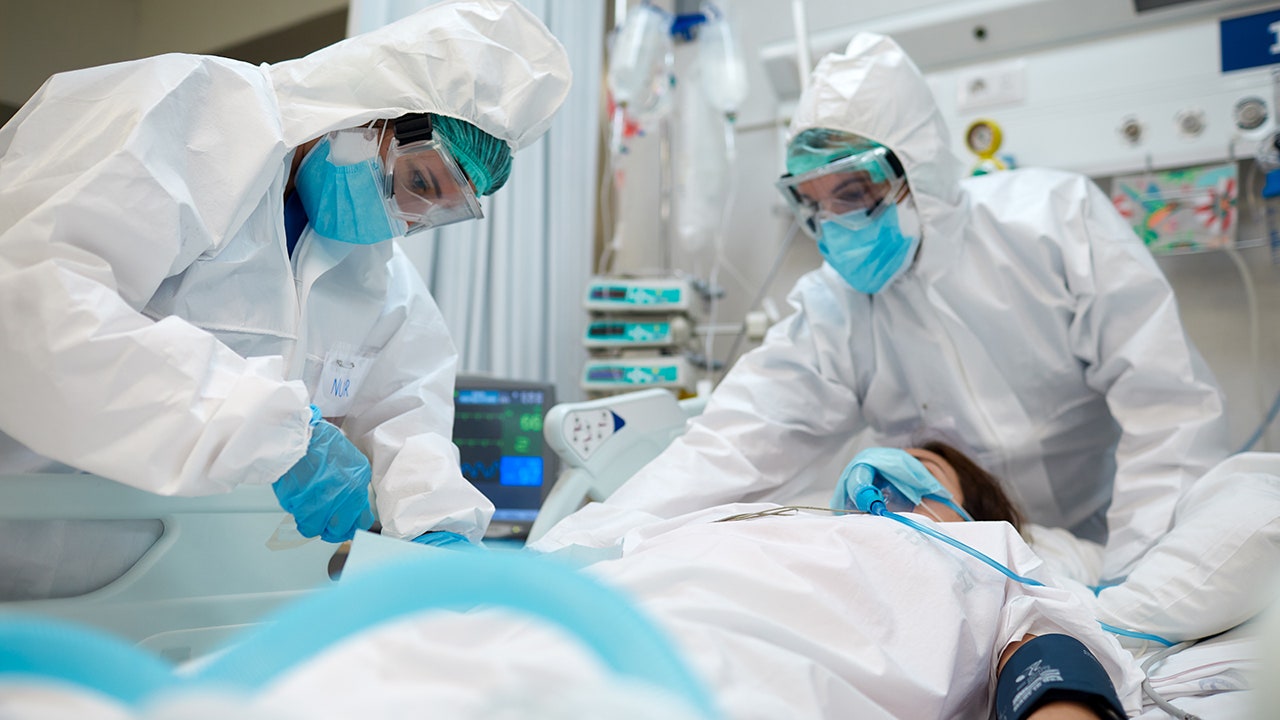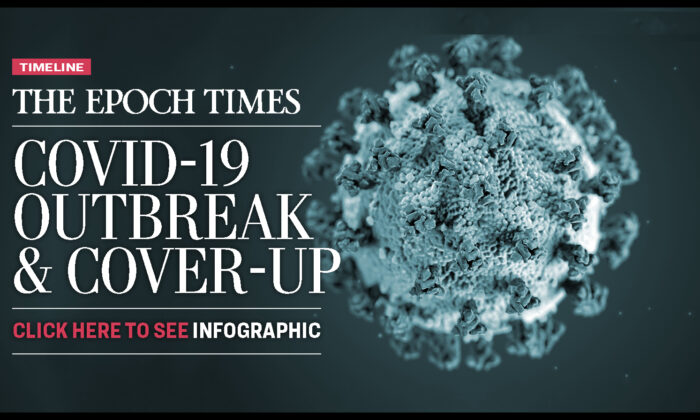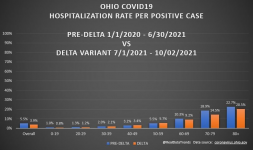
www.theepochtimes.com
2004
Shi Zheng-Li (also known as Shi Zhengli), a director at the Wuhan Institute of Virology, discovers a natural reservoir of coronaviruses in bats living in caves in southern China.
2008
Peter Daszak’s EcoHealth Alliance receives its first grant from Fauci’s NIAID: “Risk of Viral Emergence From Bats.” Daszak proposes to “examine the pathogenesis of these new viruses, and a pool of available bat viruses which have not yet emerged in humans.”
2011:
Dr. Anthony Fauci, director of the National Institute of Allergy and Infectious Diseases (NIAID); his NIAID colleague Gary Nabel; and Francis Collins, director of the related National Institutes of Health (NIH), write “A Flu Virus Risk Worth Taking” for The Washington Post. The article notes that researchers have created a laboratory virus that “does not exist in nature” and that “important information and insights can come from generating a potentially dangerous virus in the laboratory.”
2012:
Six miners clear bat excrement from a mine in Mojiang County, Yunnan Province, China. They fall ill with COVID-19-like symptoms, and three die. Later, a virus called RaTG13 is isolated from the mine by Shi’s team and sent to the Wuhan Institute of Virology. RaTG13 to this day remains the closest known relative
of SARS2.
Fauci gives a talk called “The Way Forward in Influenza Research” concerning “the controversial issue of gain-of-function research.” He says, “If we want to continue this important work, we collectively need to do a better job of articulating the scientific rationale for such experiments.”
2013-2020
The U.S. Department of Defense funnels $39 million to Daszak’s EcoHealth Alliance over a period of
eight years.
2014
The Obama administration announces a moratorium on gain-of-function research. NIH Director Francis Collins states that “these studies, however, also entail biosafety and biosecurity risks, which need to be understood better.”
2019
Daszak sends a 19-tweet thread culminating with the claim that human-wildlife-livestock interface is the likely source of the outbreak in Wuhan.
2020
January: Fauci donates Remdesivir samples to China for an experimental clinical trial to test its effectiveness against COVID-19. Remdesivir was developed with taxpayer funds by Fort Detrick scientists and the American pharmaceutical company GILEAD.
Jan. 31: President Donald Trump halts flights from China.
February:
Biden criticizes Trump’s travel ban in a tweet: “We are in the midst of a crisis with the coronavirus. We need to lead the way with science — not Donald Trump’s record of hysteria, xenophobia, and fear-mongering. He is the worst possible person to lead our country through a global health emergency.”
Fauci, Daszak, Andersen, and other scientists are invited to a meeting organized by the National Academies of Sciences, Engineering, and Medicine (NASEM) to “help determine the origins” of the COVID-19 virus. The meeting is organized on short notice at the request of White House Office of Science and Technology Policy Director Kelvin Droegemeier. Fauci gives a 10-minute presentation.
Fauci and the other scientists push the natural origins theory but are ultimately ignored by NASEM in a Feb. 6, 2020, response to the White House.
Shi posts on Chinese social media: “The novel 2019 coronavirus is nature punishing the human race for keeping uncivilized living habits. I, Shi Zheng-Li, swear on my life that it has nothing to do with our laboratory. ...
I advise those who believe and spread rumors from harmful media sources, as well as those who believe the unreliable so-called academic analysis of Indian scholars, to shut their stinking mouths.”
Andersen, Holmes, Robert Garry, Andrew Rambaut, and Ian Lipkin’s article “The Proximal Origin of SARS-CoV-2,” claiming that the virus has natural origins, is published online. According to Garry, the first draft of this article was finished on Feb. 1, the same day that Andersen told Fauci’s teleconference group he was “60 to 70 percent” sure the virus came from a laboratory. Holmes told the group at the time that he was “80 percent sure the virus came out of a lab.” Lipkin, who would later retract his opinion, was the only author who didn’t participate in the Fauci teleconference.
The Lancet publishes a letter claiming that the coronavirus originated in wildlife and condemning theories of a non-natural origin as conspiracy theories that “do nothing but create fear, rumour, and prejudice.” It would later be revealed that Daszak orchestrated the letter and that 26 out of 27 signatories are linked to the Wuhan Institute of Virology. A number of signatories would later retract their support for
the letter.
March:
University of Innsbruck bioengineer Rossana Segreto notes that the RaBtCoV/4991 virus, which had been in Shi’s possession for seven years, is an exact match for COVID-19’s closest relative. Shi had concealed the source of this virus by renaming it RaTG13 in her Feb. 3, 2020, paper.
President Trump suggests he has seen information suggesting that the pandemic started at the Wuhan Institute of Virology.
April:
Fauci dismisses the possibility of a lab origin
for the virus, citing Andersen’s “Proximal Origin” paper (see Feb 16, 2020), and claiming not to remember Andersen’s name.
Trump terminates Daszak’s grant for his research with the Wuhan Institute of Virology. Despite Trump’s cancellation, Fauci would soon award Daszak a much larger grant, on Aug. 27, 2020
2021
June
Embarek tells Danish TV2 that the lab leak hypothesis is likely correct, stating: “A lab employee infected in the field while collecting samples in a bat cave—such a scenario belongs both as a lab-leak hypothesis and as our first hypothesis of direct infection from bat to human. We’ve seen that hypothesis as a likely hypothesis.” This information is not in the WHO report, and Embarek had previously publicly stated that a lab leak was “extremely unlikely.”
Fauci admits that the virus may have originated from a lab leak at the Wuhan Institute of Virology.
Farrar states that Andersen was initially 60 to 70 percent sure the virus came from a laboratory. Farrar states that Andersen later changed his mind and concluded the virus had natural origins. Farrar’s claim ignores the fact that Andersen was privately telling Fauci on Jan. 31, 2020, that the virus was engineered while publicly claiming the opposite at the same time. Andersen was one of several recipients of large grants from Fauci’s NIAID on Aug. 27, 2020.
Embarek’s June 2021 interview is aired on Danish TV. In it, Embarek claims that Chinese scientists and officials withheld information and pressured the WHO’s team to drop the lab leak theory. After a 48-hour discussion with Chinese authorities, they agree to allow the lab leak theory to be mentioned, but only “on the condition we didn’t recommend any specific studies to further that hypothesis” and that it was deemed to be “extremely unlikely.” None of this information is contained in the formal WHO report.






